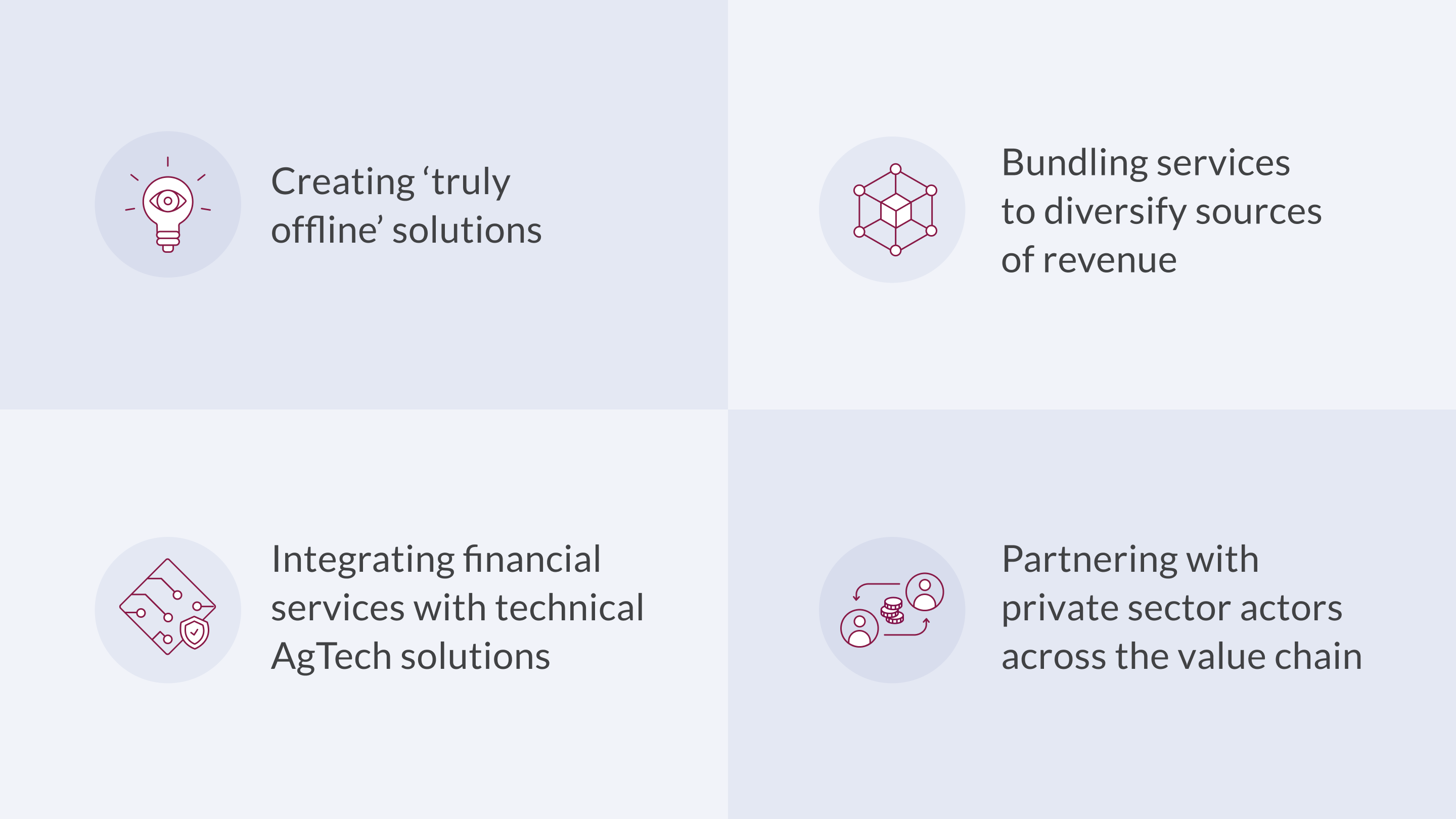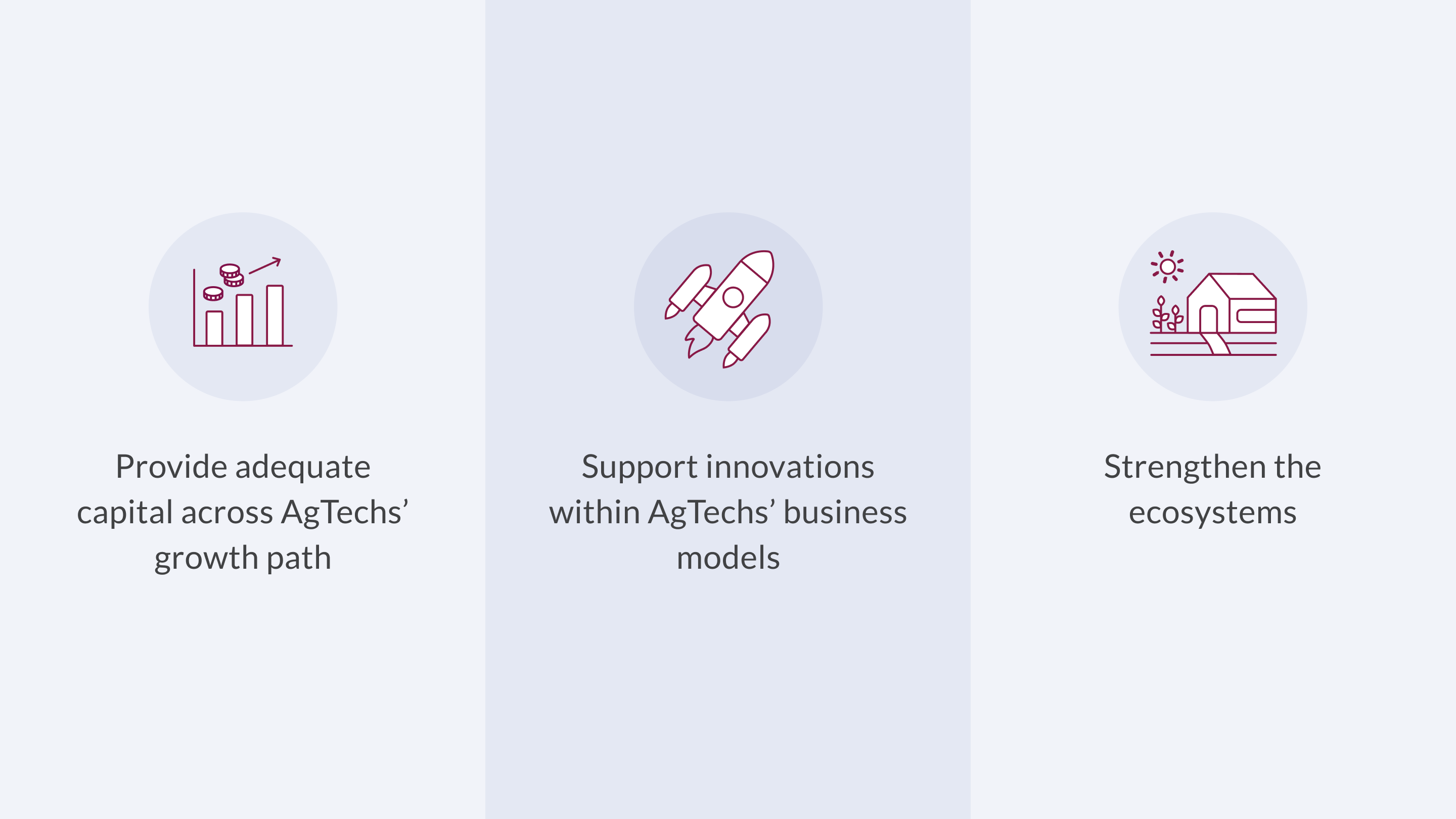Dalberg uses cookies and related technologies to improve the way the site functions. A cookie is a text file that is stored on your device. We use these text files for functionality such as to analyze our traffic or to personalize content. You can easily control how we use cookies on your device by adjusting the settings below, and you may also change those settings at any time by visiting our privacy policy page.
Smallholder farmers (SHF) have a significant role in Latin America’s food production. For example, they generate half of the food produced in Mexico¹ and about 60% of the food produced in Colombia². The region accounts for 10% of the world’s total arable land³ and contributes to 14% of the total global food production⁴. However, SHF frequently experience underrepresentation in terms of accessing finance, knowledge, information, and technology, leading to unpredictable crop outcomes and low productivity. Without access to a reliable income, SHF and their families remain locked in poverty cycles and their livelihoods are vulnerable to disruptions. What’s more, their reliance on traditional farming practices, monoculture farming, and the frequent use of chemicals contributes significantly to soil degradation, environmental pollution, and deforestation in the region.
Emerging agriculture technology (AgTech) solutions exist to help SHF achieve sustainable growth. However, for AgTech⁵ companies and entrepreneurs to effectively serve SHF in a sustainable way, impact funding must play a role in addressing financial constraints, fostering business model innovations, and strengthening collaboration across the sector.
In our work with the Rabo Foundation, we undertook an analysis of the state of the AgTech sector for smallholder farmers in Colombia and Mexico and assessed opportunities for impact funders to accelerate the development of the AgTech ecosystems in these countries. We sought to understand how AgTech might leverage support from impact funders to overcome current barriers to scaling up, address productivity and sustainability concerns, and empower SHF. In this piece, we share our insights and recommendations.
Latin America’s AgTech sector is growing but few solutions are designed to support SHF
While AgTech solutions in the region are expanding in terms of the number of players, services offered, and scale, few are designed to serve SHF. We identified over 120 AgTechs in Mexico and Colombia offering a range of services such as precision agriculture, farm management software, access to financial services, and digital marketplace platforms.
Even though investment in Latin American AgTech has grown at an explosive⁶ ~79% in the last five years, only 15% of the mapped AgTechs currently prioritize SHF as their primary focus segment.
This is in part due to perceived challenges in serving this group, including SHF’s limited capacity to pay for solutions, low levels of digital literacy, lack of familiarity with technology, and poor digital network and internet connectivity in rural areas.
Four ways to adapt AgTech product offerings for SHF
AgTechs aiming to maximize their impact on SHF need to ensure their business model adequately serves this group. This includes finding the right mix of revenue streams and diversifying sources of capital, designing solutions that are tailored to user experience and interfaces that reflect SHF realities, as well as improving user acquisition and retention strategies.
A few AgTechs in Mexico and Colombia are actively addressing the challenges that come from serving SHF; those that have succeeded offer the following valuable lessons:

- Creating ‘truly offline’ solutions. These systems work efficiently even when outside of internet access and allow SHF users to upload or download data when connected to Wi-Fi. Such a feature is essential to ensure functionality in remote and rural areas with connectivity challenges.
- Bundling services to diversify sources of revenue. This allows AgTechs to be less constrained by SHF’s limited payment capacity. For example, a farm management software connected to a digital marketplace can generate revenue from both SHF and from households purchasing fresh produce.
- Integrating financial services with technical AgTech solutions. This approach can be carried out either directly or through partnerships with financial institutions. It allows for an increase in uptake due to SHF’s high capital needs and circumvents their limited access to the formal financial sector caused by a lack of credit history.
- Partnering with private sector actors across the value chain. There are companies in the agri-food value chain interested in and willing to fund SHF’s use of AgTech solutions to streamline their own value chain or meet their ESG⁷ goals. For example, beverage companies might be willing to offset their water usage by paying SHF to use an AgTech solution focused on reducing water waste through enhanced irrigation.
How impact funding can lead the way
AgTech solutions hold great promise for addressing challenges and enhancing the value of agriculture for SHF. One of the AgTechs we engaged reported that they have enabled 5,000 farmers to receive formal financing for the first time. Another AgTech company claimed that their users experienced a 45% increase in productivity and a 38% reduction in agro-inputs waste. While AgTech solutions have great potential, there are still some hurdles to overcome in the adoption process. Transition costs, job displacement, and the risk of wasted resources are significant concerns associated with greater AgTech adoption.
As more AgTechs emerge in the region, the impact sector can take certain actions to unlock the potential of SHF-oriented AgTechs in Latin America:

- Provide adequate capital across AgTechs’ growth path: AgTechs face capital limitations; less than 10% of AgTechs in Mexico and Colombia have been able to secure series A, B, or C funding. To boost relevant solutions, impact investors and concessional funders can expand capital offerings. Grants are crucial for initial development, and later, favorable loans with competitive rates, longer tenures, and grace periods can support scaling these solutions.
- Support innovations within AgTechs’ business models: Challenges with SHF-focused models hinder access to favorable capital conditions. Impact funders can fund pilots and innovations, enabling AgTechs to find steady revenue streams and sustainable user acquisition strategies, and ensuring relevance and financial viability in the market.
- Strengthen the ecosystems. Formal and informal coordination mechanisms exist in Mexico and Colombia; however, collaboration and coordination can be improved. Impact funders can play a key role as strategic partners and connectors facilitating networking and knowledge-sharing. This will foster better partnerships, attract more investments, and create a coordinated approach with relevant stakeholders such as governments. This in turn enables a conducive environment with friendly regulations, improved connectivity, and increased publicly available data assets.
AgTech can help revolutionize smallholder farming activity, but it requires more coordinated efforts and support, a focus on increasing access to solutions that are designed considering SHF realities, and a clear business case for investors to increase their funding in the sector. Investing in AgTech can empower smallholder farmers, enhance agricultural productivity, and create a more sustainable and resilient future for Latin America’s agriculture.
Download a summary of the Colombia and Mexico reports here.
- 1
-
2
https://www.repository.fedesarrollo.org.co/bitstream/handle/11445/61/?sequence=1 (2013)
-
3
https://data.worldbank.org/indicator/AG.LND.ARBL.HA?end=2020&start=2020&view=map (2020)
- 4
-
5
AgTechs are companies operating within the agriculture value chain that offer products and services leveraging and technology to improve efficiency, profitability and/or sustainability
-
6
https://agfundernews.com/vcs-are-underinvesting-in-latin-america-agrifoodtech-fintech-and-conservation-tech-could-change-that and Dalberg analysis
-
7
Environmental, Social and Governance

